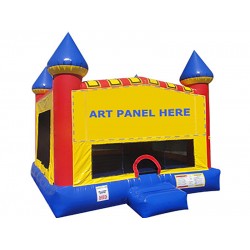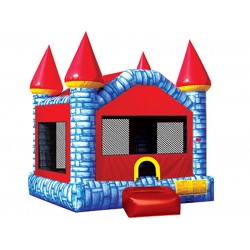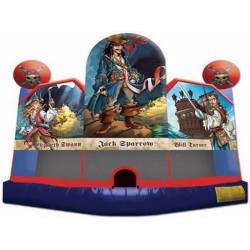What Are the Key Differences Between Inflatable Castles for Winter and Summer Use in Canada?

Inflatable castles are popular attractions for events and parties throughout Canada. However, the harsh winter conditions and the warm summer temperatures require different considerations when it comes to inflatable castles. Understanding these differences can help ensure that your inflatable castle is suitable for the seasonal conditions and provides a safe and enjoyable experience. Here are the key differences between inflatable castles designed for winter and summer use:
1. Material and Construction
Winter Use: Inflatable castles designed for winter use are typically made from materials that can withstand colder temperatures and are resistant to cold-related damage. These materials often have better insulation properties and are less likely to become brittle or lose flexibility in low temperatures.
Summer Use: For summer use, inflatable castles are usually constructed from materials that are UV-resistant and can handle exposure to sunlight. These materials are designed to resist fading and deterioration caused by prolonged exposure to the sun's rays.
2. Temperature Tolerance
Winter Use: Winter-ready inflatable castles need to be able to operate effectively in cold temperatures. They may come with features such as additional insulation or heaters to prevent the inflatable from becoming too rigid and to ensure proper functionality.
Summer Use: In hot weather, inflatable castles need to be designed to handle high temperatures. Ventilation features and materials that can dissipate heat help prevent overheating and ensure that the inflatable remains comfortable for users.
3. Safety Considerations
Winter Use: Safety is crucial in winter conditions to avoid accidents caused by icy surfaces or freezing temperatures. Winter inflatable castles should have non-slip surfaces and be placed on a stable, non-icy ground. Additionally, regular maintenance is necessary to check for any signs of damage caused by cold weather.
Summer Use: During summer, it is important to ensure that the inflatable castle is properly anchored to prevent movement due to high winds. Safety measures should also include shaded areas to protect users from excessive sun exposure and heat-related issues.
4. Maintenance and Care
Winter Use: Inflatable castles used in winter require special care to prevent damage from snow, ice, and low temperatures. Regularly inspect the inflatable for any signs of wear or damage and ensure it is completely dry before storage to prevent mold and mildew.
Summer Use: For summer, maintenance focuses on protecting the inflatable from UV damage, ensuring that it is cleaned regularly to remove dirt and debris, and checking for any signs of heat-related wear and tear.
5. Setup and Storage
Winter Use: Setting up an inflatable castle in winter may require additional precautions, such as ensuring the ground is clear of ice and snow. Storage should be in a dry, climate-controlled environment to prevent damage from freezing temperatures.
Summer Use: During the summer, ensure that the setup area is shaded and well-ventilated. Proper storage involves keeping the inflatable in a cool, dry place to prevent overheating and UV damage.
By understanding these key differences, you can better prepare and maintain your inflatable castle for seasonal use in Canada, ensuring a safe and enjoyable experience for all users regardless of the time of year.



